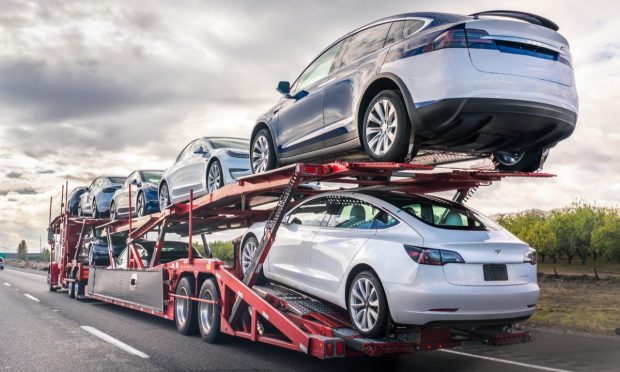Fast Payments Key to Modernizing Vehicle Shipping Industry

As car dealers sell more vehicles online and have them delivered directly to customers, consumers’ expectations are driving changes in the business of shipping vehicles.
While most of the volume of vehicle shipments is still business-to-business (B2B) — transporting vehicles between dealerships and auctions — the addition of eCommerce and consumers to the mix is accelerating improvements in industry processes.
“As consumers, we all expect shipping to be reliable, fast, transparent, inexpensive — like that Amazon effect,” Michael Malakhov, founder and CEO at Carpool Logistics, told PYMNTS.
To meet these demands in vehicle shipping, the industry must modernize and make improvements in bundling multiple vehicles for transport, tracking their delivery and providing reliable and fast payments to carriers, Malakhov said.
These requirements have been tough to meet in this fragmented industry, in which 90% of the carriers are small businesses running fleets of only one to five trucks. These small businesses provide vehicle shipments for more than 135,000 new and used auto dealerships.
Enabling Fast Cash Flow
Reliable and fast payments to carriers are key because these small businesses must keep those trucks running and pay the drivers. Too often, payments to these carriers have been slow.
“A lot of these companies are small businesses, and they need fast cash flow to support their business growth,” Malakhov said.
Among the transportation companies Carpool Logistics works with, 99% choose to receive ACH payments, which they receive within 48 hours of their delivery of the vehicles.
Only a few want paper checks, which take up to 14 days. Those who choose checks do so because they need them for accounting purposes, Malakhov said. They find it easier to receive a paper check and then account for the transaction, as opposed to having money just show up in their account and then trying to match it with something.
“That’s really the only circumstance that we’ve run into,” Malakhov said. “I would say 99% of our transactions are via ACH. We try to streamline that because when you do a lot of transactions, as seamless as you can make it for all the parties, the better it is.”
Providing Visibility to Vehicle Location and Condition
The industry also needs to share better visibility in terms of when vehicles are going to be picked up, when they’re going to be delivered and what condition they are in at both pickup and delivery, Malakhov said.
While this is something that’s been wanted when vehicles were just moving between businesses, it’s become critical now that vehicles are being delivered directly to consumers too. This is due to the Amazon effect as well as the fact that consumers must set aside time to receive the vehicle delivery in person.
“You can buy a 50-cent widget on Amazon and know where it is at all times, and here you are, you’re buying a $50,000 car and have no clue when it’s going to arrive,” Malakhov said.
The solution here is to implement a system that offers reliable scheduling, vehicle tracking and photos that show the condition of the vehicle.
Bundling Vehicles to Fill Trailers
Another part of modernizing the industry involves better bundling of vehicles. Today, 40% of auto transporters have an empty space on the trailer. When there are empty spots on the trailer, that means the cost and the amount of emissions generated by transporting them is higher for each vehicle. The carrier must either absorb the cost or pass it along to the owners of the vehicles being moved.
Here, the solution is to better bundle vehicles ahead of time, so that the driver can fill the trailer completely by finding vehicles that are in the same vicinity and heading to a similar location.
This is another area in which the expectations of consumers are likely to accelerate improvements. Currently, vehicle deliveries are slowed because carriers wait to see if they can find enough vehicles to fill up their trailer before driving to pick them all up.
“If we can pre-bundle that, the customer gets a better experience because it’s quicker delivery, and the driver gets a better experience because he’s got a full load,” Malakhov said.
Making the Process More Efficient
The need for vehicle shipping has been growing as the current shortage of new vehicles leads both dealers and consumers to search a wider radius to find the new or used vehicles they want.
The demand is likely to continue as more dealerships add home delivery options and as some automakers begin offering that option themselves.
“That’s going to continue to grow, and it’s important for us to figure out how to make the process more efficient for customers,” Malakhov said.
